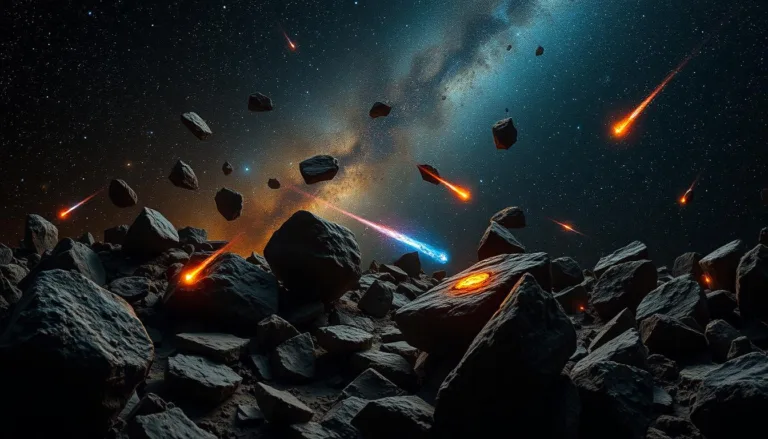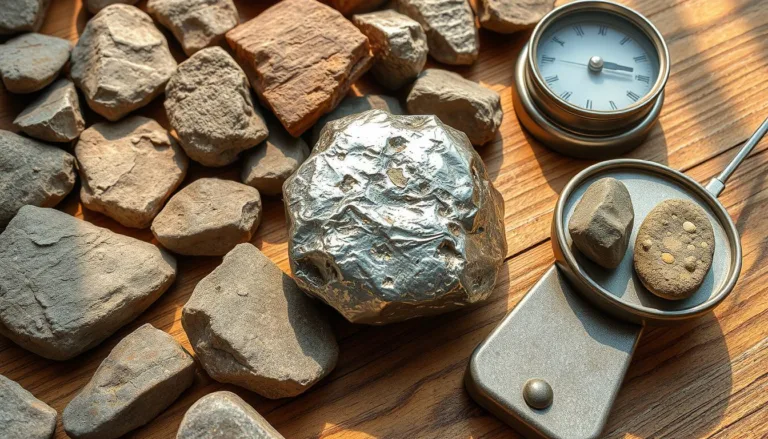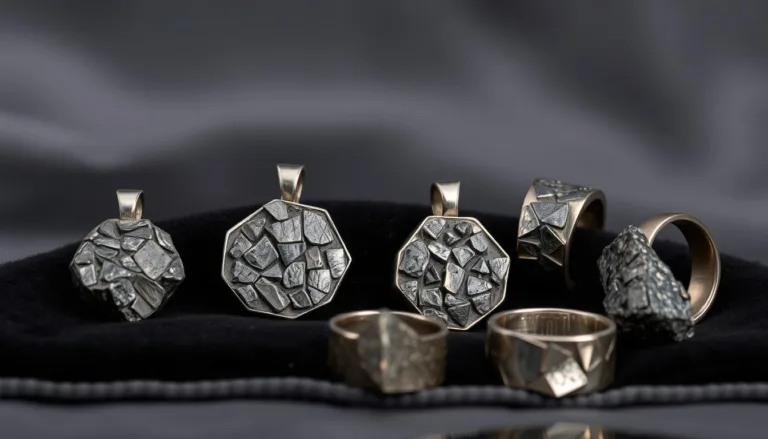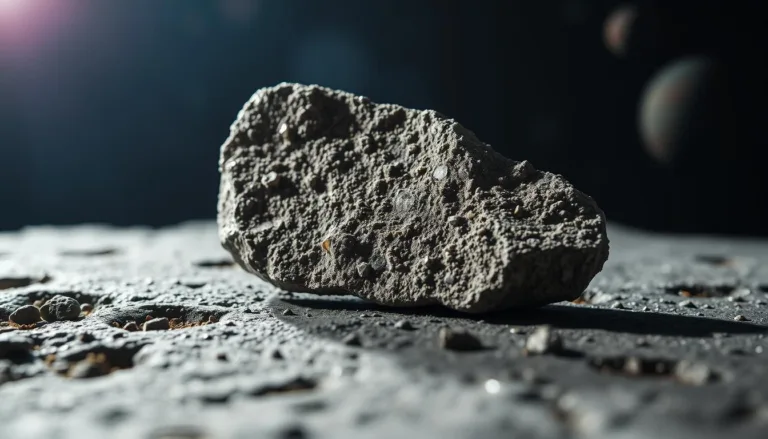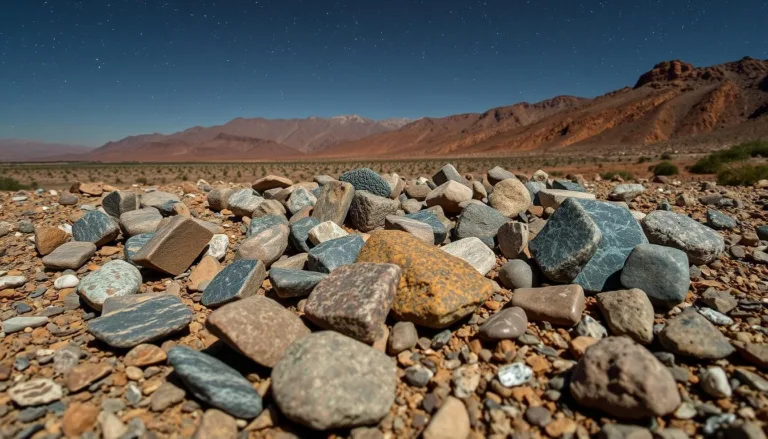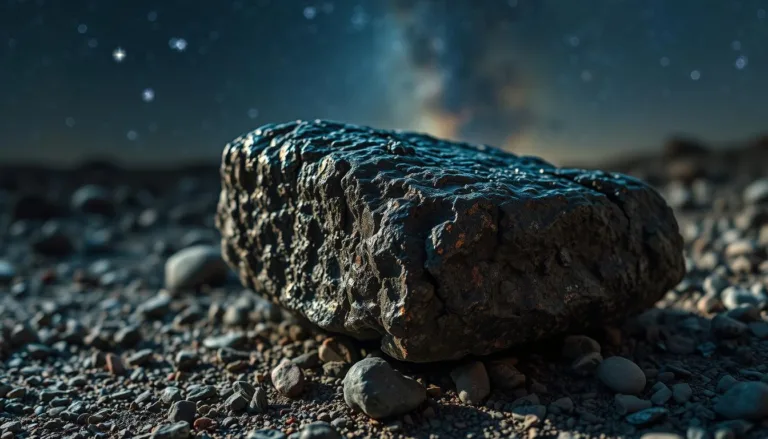Rocks are the foundation of our planet. Knowing the different types of rocks is key in geology. The five main types of rocks are crucial in Earth’s geological processes. They shape our landscape and affect the environment.
From mountains to oceans, rocks are vital to our ecosystem. Learning about the various types of rocks helps us see the beauty and complexity of our planet.
Studying rocks gives us insights into Earth’s history. It shows how our planet has changed over time. By exploring the different types of rocks, we understand the geological processes that have shaped our world.
In geology, recognizing the importance of rocks is crucial. Learning about the different types of rocks helps us appreciate the natural world. It shows us the complex processes that have shaped our planet.
Key Takeaways
- There are five primary rock types that play a significant role in Earth’s geological processes.
- Understanding the different types of rocks can help us appreciate the complexity and beauty of our planet.
- Studying rocks and types of rocks can provide valuable insights into the Earth’s history.
- The five main types of rocks are essential in shaping our landscape and influencing the environment.
- Learning about the different types of rocks can help us develop a greater appreciation for the natural world.
- Rocks and types of rocks are an integral part of our ecosystem, from the mountains to the oceans.
Understanding Rock Formation in Earth’s Dynamic Systems
Rocks are the building blocks of our planet. Their formation is a complex process. It involves various geological events and environmental conditions. Studying rocks helps us understand the Earth’s dynamic systems and how our planet is shaped.
There are different types of rocks. Each type has its unique characteristics and formation processes. The formation of rocks is influenced by several factors. These include temperature, pressure, and the presence of minerals and water.
These factors can cause rocks to change from one type to another. This process is called the rock cycle. The rock cycle is a key concept in geology. It helps us understand how rocks are formed, transformed, and destroyed over time.
The Rock Cycle Process
The rock cycle is a continuous process. It involves the transformation of rocks from one type to another. There are three main stages: igneous, sedimentary, and metamorphic.
Igneous rocks are formed from molten magma. Sedimentary rocks are formed from the accumulation of sediments. Metamorphic rocks are formed from the transformation of existing rocks under high pressure and temperature.
Factors Influencing Rock Formation
Several factors influence rock formation. These include temperature, pressure, and the presence of minerals and water. These factors can cause rocks to change from one type to another.
For example, high pressure and temperature can transform igneous rocks into metamorphic rocks. Understanding these factors is essential for understanding the Earth’s dynamic systems and the processes that shape our planet.
| Type of Rock | Formation Process |
|---|---|
| Igneous | Formed from molten magma |
| Sedimentary | Formed from the accumulation of sediments |
| Metamorphic | Formed from the transformation of existing rocks under high pressure and temperature |
Understanding rock formation is key to understanding the Earth’s dynamic systems. By studying rocks and their formation, we can gain insights into the Earth’s history. This helps us understand the processes that have shaped our planet over time.
What Are the 5 Main Types of Rocks?
Exploring the Earth’s geology, it’s key to know the different types of rocks. The question what are the 5 main types of rocks? is crucial. The answer is in five main categories: igneous, sedimentary, metamorphic, and two more: chemical and organic rocks.
Let’s dive into what each type is:
- Igneous rocks come from molten material, like lava or magma.
- Sedimentary rocks are made from sediments, such as sand or mineral particles.
- Metamorphic rocks change from existing rocks under high pressure and temperature.
- Chemical rocks form through chemical precipitation, often in water.
- Organic rocks are made of organic material, like plant or animal remains.

Knowing the different types of rocks helps us understand the Earth’s history and how it’s shaped. By learning about each type, we see the Earth’s rocky foundation’s complexity and diversity.
The study of rocks and their formation is fascinating. It helps us uncover the Earth’s history. Exploring the 5 main types of rocks deepens our understanding of the Earth’s systems and how they’ve changed over millions of years.
Igneous Rocks: Born from Molten Material
Igneous rocks form when molten material, like magma or lava, cools and solidifies. This can happen under the Earth or above it, leading to different types of rocks. The process involves temperature, pressure, and what the material is made of.
Studying igneous rocks helps us understand the Earth’s inner workings and how it changes. By looking at these rocks, scientists learn about the Earth’s past and how it moves.
Intrusive vs. Extrusive Formation
Igneous rocks fall into two groups: intrusive and extrusive. Intrusive rocks form when magma cools under the Earth, making them coarse-grained. Extrusive rocks cool and solidify above ground, resulting in fine-grained textures.
Common Igneous Rock Examples
Examples of igneous rocks include granite, basalt, and obsidian. Granite is a coarse-grained rock rich in quartz and feldspar. Basalt is a fine-grained rock found in volcanic areas. Obsidian is a dark, glassy rock that forms quickly when lava cools.
Identifying Features of Igneous Rocks
Igneous rocks have unique textures and mineral mixes. Their texture tells us about their formation, and their minerals show their chemical makeup. By studying these, geologists understand more about the Earth’s rocks and how it changes.
| Type of Igneous Rock | Texture | Mineral Composition |
|---|---|---|
| Granite | Coarse-grained | Quartz, feldspar, mica |
| Basalt | Fine-grained | Plagioclase, pyroxene, olivine |
| Obsidian | Glassy | SiO2, Al2O3, FeO |
Sedimentary Rocks: Layers of Earth’s History
Sedimentary rocks are fascinating. They form from sediments like sand, silt, and clay. These sediments are compressed over time, creating new rocks.
These rocks are like a puzzle, each layer telling a story of Earth’s past. They preserve history through fossils and layers. Sedimentary rocks like sandstone and limestone are found in many places, from deserts to oceans.
Sedimentary rocks have a layered structure and fossils. These features help identify them. Here are some examples:
- Sandstone: formed from sand-sized particles
- Limestone: formed from calcium carbonate, often containing fossils of marine organisms
- Shale: formed from clay-sized particles
In conclusion, sedimentary rocks are crucial for understanding Earth’s history. By studying them, we learn about our planet’s past and how it has changed over time.
| Type of Sedimentary Rock | Formation Process | Examples |
|---|---|---|
| Sandstone | Formation from sand-sized particles | Desert sandstones, beach sandstones |
| Limestone | Formation from calcium carbonate | Coral reefs, marine limestone |
| Shale | Formation from clay-sized particles | Clay deposits, mudstones |
Metamorphic Rocks: Transformed by Nature
Metamorphic rocks are made when existing rocks change due to heat, pressure, or chemicals. This change can happen for many reasons, like mountain building or being near magma. Because of this, metamorphic rocks have special features that set them apart.
There are two main ways metamorphism happens: contact and regional. Contact metamorphism happens when rocks get hot and pressurized near magma or hot rocks. Regional metamorphism is when rocks face high pressure and heat over a big area, like during mountain formation.
Examples of Metamorphic Rocks
- Marble: a metamorphic rock formed from limestone or dolostone
- Slate: a metamorphic rock formed from shale
- Quartzite: a metamorphic rock formed from sandstone
Metamorphic rocks can be told apart by their unique features, like foliation and recrystallization. 
Distinctive Features of Metamorphic Rocks
Metamorphic rocks often show foliation, a layered look. This happens because minerals line up under high pressure and heat. They also might go through recrystallization, where new minerals form or old ones grow.
| Rock Type | Formation Process | Distinctive Features |
|---|---|---|
| Marble | Contact metamorphism | Foliation, recrystallization |
| Slate | Regional metamorphism | Foliation, low-grade metamorphism |
Practical Guide to Rock Identification
Learning to identify types of rocks is both fun and educational. It lets you connect with nature and learn about Earth’s history. Start by improving your observation skills. This will help you spot the unique features of different rocks.
Begin by looking at the rock’s color, texture, and structure. For instance, sedimentary rocks show clear layers, while igneous rocks have a uniform look. Use these observations and simple tests, like the acid test for limestone, to narrow down your guesses.
Visual Identification Methods
When identifying types of rocks, look for:
- Color and pattern
- Texture and grain size
- Mineral composition
- Structure and layering
Testing Techniques for Rock Classification
There are also tests to help classify rocks and figure out what they’re made of. These include:
- Acid testing
- Magnetic testing
- Streak testing
Common Characteristics to Look For
By using your eyes, tests, and knowledge of types of rocks, you can get good at identifying them. Always be gentle with rocks. If you’re not sure, ask a geologist or use a field guide for help.
| Type of Rock | Characteristics |
|---|---|
| Igneous | Uniform texture, may exhibit glassy or crystalline structure |
| Sedimentary | Distinct layers or bedding planes, may contain fossils |
| Metamorphic | Altered mineral composition, may exhibit foliated or non-foliated structure |
Conclusion: Understanding Earth’s Rocky Foundation
In this journey, we explored the 5 main types of rocks that make up our planet. We saw how igneous rocks start from fire, sedimentary rocks tell stories of the past, and metamorphic rocks change in amazing ways. This shows us how complex and fascinating Earth’s foundation is.
Understanding these rock types is more than just learning. It helps us see how our world was made. From mountains to plains, knowing about rocks lets us understand Earth’s history and future.
Next time you find a rock, think about its story. Maybe it was shaped by Earth’s heat or formed from ancient sediments. Use your senses, look closely, and explore the 5 main types of rocks that make our world.


